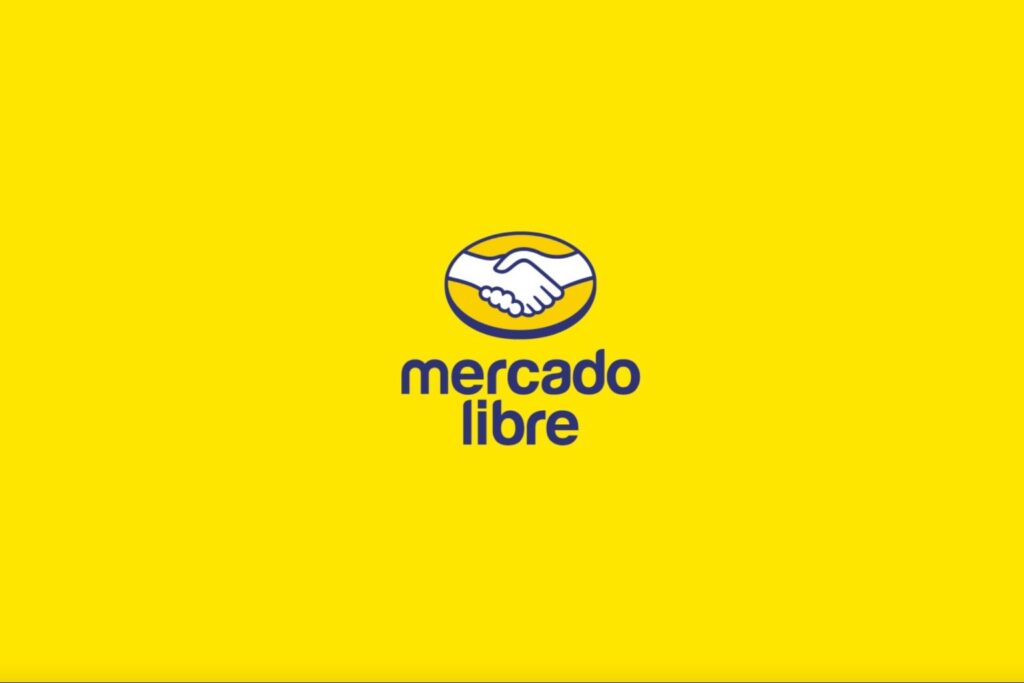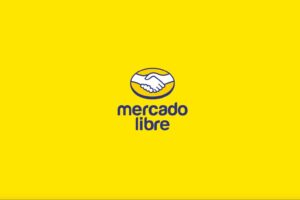Mercado Libre
Mercado Libre is more than Latin America’s largest company by market capitalization – it is the main driver of the region’s digital transformation. The logistics of Amazon, Alibaba’s marketplace, and Block’s fintech capabilities, all rolled into one company in a region experiencing rapid structural growth. The company is traded both on the Argentine stock exchange and in New York, allowing Swedish and Nordic investors to buy shares.
– The largest company in Latin America: With a valuation of ~$100 billion, Mercado Libre is leading the region’s digital transformation, blending e-commerce, logistics and fintech into its own ecosystem.
– Impressive moats: MercadoLibre has built several lasting competitive advantages that reinforce each other, from its logistics network to its brand.
– Market leadership: Being a top player in 18 countries is a self-reinforcing force.
– Margin expansion: There are plenty of catalysts to increase profitability.
– A history of excellence: Few companies globally can match Mercado Libre’s consistent success.
Mercado Libre, a leading e-commerce player
As Latin America’s largest company by market capitalization, Mercado Libre, often referred to as Meli, is a leading e-commerce player and a dominant force in fintech in the region. Valued at ~$100 billion, the company has been working since 1999 to democratize trade and financial services in Latin America. The company does this by offering a suite of technologies that address every step of the e-commerce and fintech value chains. With operations in 18 countries, Meli holds a market-leading position in all major Latin American markets.
Melis offers marketplaces for e-commerce, logistics, digital payments, credit and advertising services, forming a tightly interwoven ecosystem. Its marketplace and logistics network is arguably the backbone of the entire business. Building and maintaining such an operation is highly capital-intensive and complex, but that is precisely what gives Meli its edge. The sheer scale of its logistics infrastructure creates a moat that is incredibly difficult for competitors to cross. Meli can then add high-margin revenue on top of the physical infrastructure.
At the heart of Meli’s success is its founder-led management team, a group that owns around eight percent of the business.
An Argentinian start-up with big ambitions
Mercado Libre’s story began in 1999, when 28-year-old Marcos Galperin, was studying for his MBA at Stanford University. He comes from a wealthy Argentine family that owns SADESA – one of the world’s largest leather companies.
At the time, the internet was rapidly transforming global commerce, and Silicon Valley was a hotbed of entrepreneurial energy. E-commerce giants like Amazon and eBay were rewriting the rules of retail in the US, and Galperin saw a chance to bring this revolution to an overlooked region: Latin America.
Galperin approached two close friends to join him who would become his co-founders, Hernan Kazah and Marcelo Gutiérrez, and the trio started building. They understood the importance of being a first-mover in the e-commerce space, so they put everything into launching Mercado Libre as quickly as possible.
While Amazon and eBay were thriving in the US, Latin America presented unique challenges. Internet and credit card penetration was and still is low, logistics infrastructure was very shaky and trust in online transactions was almost non-existent.
If Mercado Libre could solve these problems, it would be making inroads into a region of over 600 million people hungry for the convenience and variety that e-commerce and fintech can offer.
Mercado Libre, which means ‘free market‘ in Spanish, was launched in 1999. Inspired by eBay’s auction-based model, it was launched with a twist – one designed to tackle the unique challenges of the region. What set Mercado Libre apart was its early recognition of a critical obstacle: trust.
To address this, it didn’t just connect buyers and sellers; it went a step further and introduced its own internal payment system. This innovative move laid the foundation for Mercado Pago, the company’s fintech powerhouse, which by the third quarter of 2024 accounted for 41% of total sales.
Today, Mercado Libre is the largest company in Latin America by market capitalization with a valuation of over $100 billion.
More than just an e-commerce platform
Meli is not just an e-commerce platform; it is an ecosystem designed to power commerce across Latin America, both online and offline. At the heart of this ecosystem are six key business segments, each of which plays an important role in the company’s growth story.
MercadoLibre Marketplace
MercadoLibre Marketplace is the beating heart of the company. This fully automated platform allows third-party traders, individuals, and Meli himself to list, sell, and buy products digitally. In the third quarter of 2024, the company had 60.8 million unique marketplace buyers – a 21 percent increase over the previous year, which is the fastest growth rate since the pandemic.
Initially, the marketplace was modeled on a Latin American eBay, where it was less about supply chain management and more about connecting buyers and sellers – a strategy similar to Alibaba’s business model, not Amazon. Today, Meli operates a mix between third-party (3P) and first-party (1P) sales.
Meli has leveraged this marketplace as a foundation to launch other ventures, such as Mercado Puntos, a loyalty program similar to Amazon Prime introduced in 2019 in several Latin American countries. Customers earn points with every purchase or by adding money to their Mercado Pago accounts (Meli’s fintech division). These points unlock perks like free shipping and exclusive discounts as users climb through the program’s tiers.
Although Meli has not disclosed the number of subscribers, its value lies in the strategy. Instead of starting from scratch, Meli learns from the successes and failures of global giants like Amazon, Alibaba, and JD. This ability to adapt proven models not only strengthens Meli’s offerings but also lowers execution risk.
Mercado Pago
In 2003, Mercado Pago was launched as more than just a payment processor – it was designed to be the financial backbone of Meli’s growing ecosystem. Today, it offers a suite of services that go beyond payments, including point-of-sale systems, credit solutions, prepaid cards, digital wallets, and even investment accounts. One of its smartest features? Its asset management product, which encourages users to park their money in Mercado Pago wallets by offering returns that surpass traditional checking accounts.
As of the third quarter of 2024, Mercado Pago had 56 million monthly active users, an increase of a staggering 35 percent over the previous year. These users – who span both wallet payers and collectors – only scratch the surface of Latin America’s population of 670 million, leaving room for expansion. The platform operates in seven major markets, including Argentina, Brazil and Mexico.
What really sets Mercado Pago apart, however, is its independence from third-party payment processors like Visa and MasterCard. Whether it’s a transaction on Meli’s marketplace or a purchase made elsewhere, Mercado Pago can handle everything in-house. This autonomy allows Meli to retain a larger share of the revenue, effectively positioning Mercado Pago as a Latin American payment processor similar to Visa or MasterCard.
Almost two-thirds of Mercado Pago’s total payment volume now comes from transactions outside the MercadoLibre marketplace. This reach not only diversifies the business but also reinforces its role as a financial ecosystem in its own right.
Another strength is Meli’s direct issuance of debit and credit cards. The company has financial institution licenses in all its countries of operation, allowing Mercado Pago to cut out the middleman and offer its own cards. By avoiding the hefty “tax” on digital payments, Mercado Pago is able to maintain higher margins, all else being equal, giving it a clear edge in the fintech arena across Latin America.
Mercado Credito
Mercado Crédito, is a market that has been overlooked by traditional banks. In a region where access to credit is scarce, especially for small businesses and ordinary consumers, Mercado Crédito steps in to bridge the gap.
Mercado Crédito makes users rely more on the Melis ecosystem. It’s a classic flywheel effect: more credit leads to more sellers, a wider product range, more buyers and ultimately more transactions.
Meli’s approach to funding is smart and strategic. While the company partners with heavyweights like Citi and Goldman Sachs for funding, these institutions are only involved in providing capital – not managing the lending process.
Third-party funding allows Meli to grow without being constrained by its own balance sheet. It also spreads the risks. Melis has stated that it plans to move to more balance sheet lending over time. This move is likely to improve margins and provide greater control over operations.
Mercado Credito’s mission is particularly important in regions like Brazil, where the financial system is highly concentrated. Five major banks control over 70% of the market and lending rates are among the highest in the world. In 2023, Brazil’s average lending rate was 43.6%, according to the World Bank. In other words, it is difficult for both small businesses and consumers to access affordable credit through traditional channels.
This is how it works:
– Credit to sellers: More small businesses can list products, increasing the variety of the market.
– Credit to consumers: Buyers can afford more, which drives demand.
– Market growth: a richer offer attracts even more users.
– Integrated ecosystem: Users use Mercado Pago, Mercado Ads and Mercado Envios (logistics services), increasing revenues in several segments.
It is a self-playing piano that makes Meli’s ecosystem stronger at every turn (but of course risks need to be carefully managed – we will come back to this point later).
Brazil is by far Meli’s largest market, contributing 55% of total revenue in Q3 2024. Its market challenges – concentrated banking, high interest rates and limited credit availability – create a huge opening for Meli to step in and disrupt the status quo. Meli’s fintech revenue grew 81 percent year over year in the last quarter, growing 43x between 2015 and 2023.
Mercado Envíos
Mercado Envios is the logistics arm of MercadoLibre. By blending third-party operators with its own delivery and warehousing capabilities, Envios offers seamless, end-to-end logistics. From storing inventory in strategically located warehouses to ensuring fast deliveries, it’s all about making life easier for buyers and sellers while keeping costs low and delivery times short.
Mercado Envios is a mix of solutions
– Fulfillment services: Storage and shipping of goods directly from Melis warehouses.
– Drop-shipping: allows sellers to send goods directly to buyers.
– Last-mile delivery: ensuring that products reach customers’ doorsteps quickly and reliably.
For users, this means they can find almost anything on Mercado Libre and have it delivered quickly – especially in big cities, where one-day shipping is becoming the norm for most products.
Like its fintech products, Envios is about building trust while arguably enabling e-commerce in a relatively underdeveloped region, at least that’s how it was back in 2013 when Meli started building the logistics fleet. This model connects people, places and products in ways that would not otherwise be possible.
Currently, Mercado Envios operates in 7 of the 18 countries where Meli is present. Why not everywhere? The rollout is carefully aligned with the availability of Mercado Pago, creating a double layer of integration that makes the platform even stickier.
MercadoLibre is revolutionizing logistics in Latin America, building networks that are becoming smarter and more efficient with each passing quarter. History shows that e-commerce companies that invest heavily in logistics infrastructure – such as Amazon, Coupang, JD and Meli – usually dominate their respective home fields.
Mercado Ads
Mercado Ads allows businesses to promote their products and services directly on the Meli platform. Brands and sellers can display ads on Meli’s web pages through product searches, banner ads, suggested products, and more.
During the Q2 2022 earnings call, Meli stated that they have only begun to scratch the surface of the potential of their advertising business, emphasizing that this business segment has EBIT margins of 70-80 percent.
To understand the potentially high operational leverage of this business, it is important to analyze the cap rate – the portion of revenue Meli generates from each sale on its platform. For e-commerce marketplaces, the cap rate typically includes four main components: 1) commission on sales, 2) advertisements, 3) payments, and 4) logistics. Currently, almost all of Meli’s tariff comes from logistics, payments, and commissions, as advertising is still in its early stages.
Logistics and payments often have low or no margins due to their costs. Revenue from logistics is usually offset by the cost of fulfilling orders, while payments revenue is largely spent on fees to banks or credit card issuers, leaving little net margin for the platform. Consequently, the net margin from the take rate comes mainly from commission on sales and advertising services, while payments and logistics focus on improving the customer experience and strengthening competitive advantage.
Given this cap rate structure, margins for third-party sales in e-commerce can be very attractive when businesses:
– Leverage scale with 3P logistics partners or run significant parts of logistics in-house, as Meli does.
– Optimize payment fees by negotiating better terms with banks/issuers or, as in Meli’s case, own the payment network and issue cards directly.
– Increasing commission rates on goods sold, a process that takes time but is often most successful for market leaders like Meli.
– Develop a robust advertising offer for sellers to promote their products effectively.
Breaking down the pace and understanding the drivers behind the net margin of marketplace operators reveals that Meli has all the characteristics needed for both strong competitive advantages and high margins.
As mentioned earlier, Meli has just started exploring the potential of its advertising business. Amazon serves as an excellent benchmark for the opportunities in e-commerce advertising. Amazon’s advertising business currently generates a revenue run rate of USD 60 billion, representing 9% of total sales, with very low marginal costs. Developing and expanding its advertising business is likely to play a crucial role in Meli’s future growth and margin expansion.
Meli’s advertising revenue grew 37 percent year-over-year in the third quarter of 2024, outpacing GMV growth of 14 percent and reaching a penetration rate of 2.0 percent of GMV, an increase of 30 bps year-over-year. This equates to $258 million in sales. Assuming an EBIT margin of 75 percent, ad revenue would already account for about a third of the company’s EBIT – pretty damn fascinating, especially considering that scaling this revenue stream only requires continued deployment on its own platform (without competition) and that penetration rates remain relatively low. By comparison, Amazon’s advertising penetration on its GMV is roughly 5 percent, while Melis, as mentioned, is at 2 percent.
Mercado Shops
Mercado Shops is the company’s answer to Shopify, giving sellers the tools to create their own online stores while leveraging all the benefits of Meli’s powerful ecosystem. It’s a one-stop-shop for sellers who want to grow their brand without sacrificing access to top-notch payment solutions, logistics, shipping, delivery, and sales management tools.
Setting up a store on Mercado Shops is easy, and sellers can make their brand shine with custom logos, colors, and a variety of templates. Sellers also get access to several digital marketing integrations, including Google Analytics. Mercado Shops combines the flexibility of a standalone store with the strength of Meli’s infrastructure. Store Leads (2024) states that there are ~43,000 active Mercado Shops stores in various countries.
E-commerce and its competitive advantages
To really understand Meli as a company – its history and its huge potential – you first need to understand e-commerce. E-commerce is growing steadily, taking an ever greater share of retail sales across all continents. The benefits are clear for consumers. E-commerce offers lower prices, a much wider choice and availability that physical retail simply cannot match. It saves time, reduces friction and provides better availability. This winning combination makes it an easy choice for customers, and that’s why the industry continues to thrive.
What makes e-commerce particularly fascinating is its rarely talked-about optional extras. The sector has proven to be a springboard for some of the most transformative companies of our time. Alibaba, originally an online marketplace, became China’s largest fintech and insurance giant. Amazon started by selling books online but grew to dominate the cloud business globally. JD.com is now a logistics powerhouse, perhaps the most efficient at scale in the world. Meanwhile, MercadoLibre and Sea Limited are emerging as fintech and logistics titans in their respective emerging markets, Latin America and Southeast Asia.
Beneath the sleek online interface is a massive, complex physical infrastructure – distribution centers, logistics networks and supply chains – that is costly and time-consuming to replicate. This infrastructure acts as a significant moat, protecting companies like Meli from potential competitors. Building such a network from scratch requires astronomical investment and years of operational expertise.
This combination of digital scalability and physical barriers creates a unique double advantage. Meli can grow its digital services rapidly while its extensive logistics infrastructure makes it incredibly difficult for newcomers to encroach on its market share. When tied to complementary digital offerings – such as its fintech solutions – this physical backbone turns into a formidable competitive advantage.
Network effects further strengthen Meli’s position. As its platform grows, it attracts more users, which in turn enhances its value proposition and strengthens its moat. This interplay between physical and digital infrastructure creates an ecosystem that is not only resilient but also increasingly indispensable.
There is also room for growth, driven by a young and growing population and rapidly increasing internet penetration in Latin America, both of which are driving growth:
The company is the market leader
Meli stands as the undisputed king of Latin American e-commerce with nearly 25 percent of the market. Its vast ecosystem of e-commerce and payment solutions creates a network effect that is incredibly difficult to compete with.
If anyone has the resources to challenge Meli, it is undoubtedly Amazon – with its bottomless pockets and relentless scaling strategies.
Risks
One of the biggest challenges is to stand out in an increasingly crowded digital marketplace. Products often look the same and switching costs for customers are virtually zero – it only takes a few clicks to get to a competitor. This dynamic can quickly lead to price wars, where companies race to the bottom and squeeze margins thin. It’s a story we’ve seen before, mirroring the struggles of physical retail in the US over the past 50 years.
This reality underlines a hard truth: a company is only as strong as the competitive environment allows it to be.
How does an e-commerce company stay ahead when today’s big advantages can become tomorrow’s industry standard? It’s a constant struggle to innovate, adapt and build moats that last.
The answer probably lies in being relentlessly focused on what customers want and constantly finding ways to deliver more value. The fundamentals of what consumers want have not changed: people want convenience, choice, price and some entertainment. What has changed is how we define these things in a digital age.
– Convenience used to mean a shop close to home. Now it’s all about same-day or next-day delivery, with tracking updates and reliable service.
– Selection was once the biggest department store in town. Today, it’s millions of SKUs online, ready to ship anywhere.
– The price is not only competitive anymore – it is expected to be the lowest on the market, sometimes even worldwide.
– Entertainment has evolved from in-store events to the full online shopping experience, complete with gamified features, live trading and seamless usability (intangible assets such as brand and user interface also come into play to some extent).
Companies like Amazon have raised expectations even further by combining extra services into their core offerings. With Amazon Prime, customers get free shipping along with perks like video and music streaming. Competitors like Walmart and JD.com are following suit and offering similar packages to remain competitive.
But what happens when everyone plays the same game? As bundling becomes the norm, differentiation will need to evolve again.
For companies like Meli, the next step may lie in deepening customer relationships through hyperlocalization, more tailored services, or creating entirely new ecosystems of value. Whether it’s integrating more fintech offerings, investing in AI-driven personalization, or even more revolutionary logistics, the future will belong to those who can redefine the customer experience before their competitors do.
The way forward
One exciting avenue Meli could explore is to increase the share of private label products. Private labels are often a win-win: they provide better value for consumers while increasing retailer margins. By removing the middleman – no ‘brand tax’ and fewer layers in the supply chain – private labels can deliver high-quality products at lower prices.
Retailers around the world are leaning on this strategy. Walmart has built a strong portfolio with brands like Marketside, Great Value and George. Costco’s Kirkland is practically a household name of its own. In China, JD Jing Zao and Amazon have developed several successful private label brands.
This would undoubtedly be a natural progression for Meli. Consumers in Latin America already associate the company with trust and quality. By leveraging its vast amounts of consumer data, Meli could create products tailored specifically to its customers’ needs, driving loyalty while improving supply chain efficiency.
Expanding own brands also ties into a larger opportunity: deeper vertical integration. By digitizing manufacturers and bringing parts of the supply chain in-house, Meli could unlock new efficiencies while retaining greater control over costs and quality. This is particularly valuable in Latin America, where trust in brands and consistent supply can be significant barriers.
The big picture
Meli faces a growing challenge: competition, especially from global titans like Amazon. While the company’s well-established ecosystem and powerful network effects act as a solid moat for now, no moat is unbreakable. The long-term sustainability of this advantage is far from guaranteed.
Another major risk Meli faces lies in the health of the Latin American consumer. Economic volatility is a familiar story in the region, and it directly affects consumer spending, which in turn affects Meli. This risk is amplified by the presence of global competitors like Amazon, whose business is not tied to the ups and downs of Latin America’s economy. During a regional economic downturn, Amazon may take the opportunity to increase its presence, while Meli may be forced to scale back.
A critical test came in 2018 when Brazil’s national postal service raised its prices, leading to a severe blow to Meli’s margins. Many companies would have pulled back in the face of such economic pressure, but not Meli. Galperin doubled down and invested even more in logistics, focusing on expanding fulfillment centers and opportunities for free shipping. This bold move, although risky at the time, gave the company a decisive advantage as competitors hesitated.
This approach – acting decisively and reinvesting in critical verticals – has become one of Meli’s signature strengths. The company’s ability to identify future-defining areas and invest resources in them early has been a cornerstone of its success. It’s fair to say that Meli’s management doesn’t just steer the ship; they are a core part of its competitive advantage.
Another outstanding strength of the leadership is their deep understanding of Latin America’s unique challenges and opportunities. After all, Latin America has 33 different countries. Early on, Galperin and his team adopted a decentralized structure, allowing regional teams to work semi-independently. This approach allows Meli to adapt to the diverse needs of markets such as Brazil, Argentina and Mexico, and tailor strategy
Meli uses debt strategically
The company’s current debt primarily supports core operations. The credit operations, which are intensive third-party financing, as well as the floatation from the Mercado Pago wallets explain the bulk of the short-term liabilities. These are natural by-products of the Meli ecosystem.
Long-term debt, on the other hand, is more targeted. It is usually targeted at capital-intensive areas such as logistics and shipping, where cash conversion cycles are longer, or it is used to create financial safety nets, as seen with the latest capital raising (debt financing) in September 2024.
In recent quarters, the net debt to EBITDA ratio has been consistently around 0.5x, reflecting careful financial discipline. Just over a year ago, this ratio stood at around 3x. The reduction in this ratio is likely due to: 1) a deliberate strategy to build financial firepower during a period of booming capital markets and business conditions, and 2) stronger margins, which have reduced leverage ratios.
Meli’s debt management strategy – using Mercado Pago wallets as “float” (a form of free debt, but not risk-free) and reducing leverage during favorable times through a countercyclical approach – shows high-quality management.
Let’s look at the big picture. Since 2007, Meli has been cash flow positive every year. Yes, even during the global financial crisis of 2008-2009, when companies across industries were struggling just to survive. That level of resilience is rare.
Over the past decade, the company’s revenue has grown by 36x. Take a second to let that sink in. And it didn’t achieve this by burning through cash recklessly. It does so while maintaining exceptional control over its free cash flow as mentioned.
Concluding thoughts
Mercado Libre is no longer just an online retailer – it is becoming the digital backbone of Latin America, blending e-commerce, logistics and fintech into a cohesive powerhouse. Its advanced logistics network, built over a decade of investment, gives it a competitive advantage that is hard to match. At the same time, the company’s trusted brand and ecosystem reinforce its marketplace, payments and advertising businesses, creating a self-reinforcing growth cycle.
With Latin America’s young population, increasing digital adoptions and untapped potential, Mercado Libre is perfectly positioned to lead the region’s e-commerce and fintech revolution. Mercado Libre isn’t just leading the way – it’s redefining what’s possible in Latin America.
Viking offers price data on US stocks
Want to follow and analyze some of the biggest companies in the world? Here you can analyze the giants like Berkshire, Apple, Microsoft, JP Morgan and Google.
You can do this by adding the extensions Nasdaq and NYSE, the New York Stock Exchange, from as little as SEK 58 per month.
About the Vikingen
With Vikingen’s signals, you have a good chance of finding the winners and selling in time. There are many securities. With Vikingen’s autopilots or tables, you can sort out the most interesting ETFs, stocks, options, warrants, funds, and so on. Vikingen is one of Sweden’s oldest equity research programs.
Click here to see what Vikingen offers: Detailed comparison – Stock market program for those who want to get even richer (vikingen.se)













